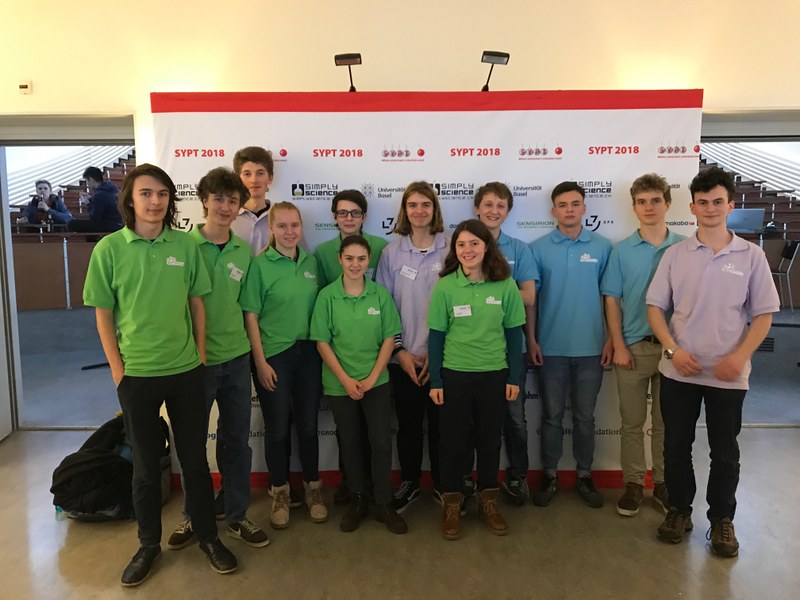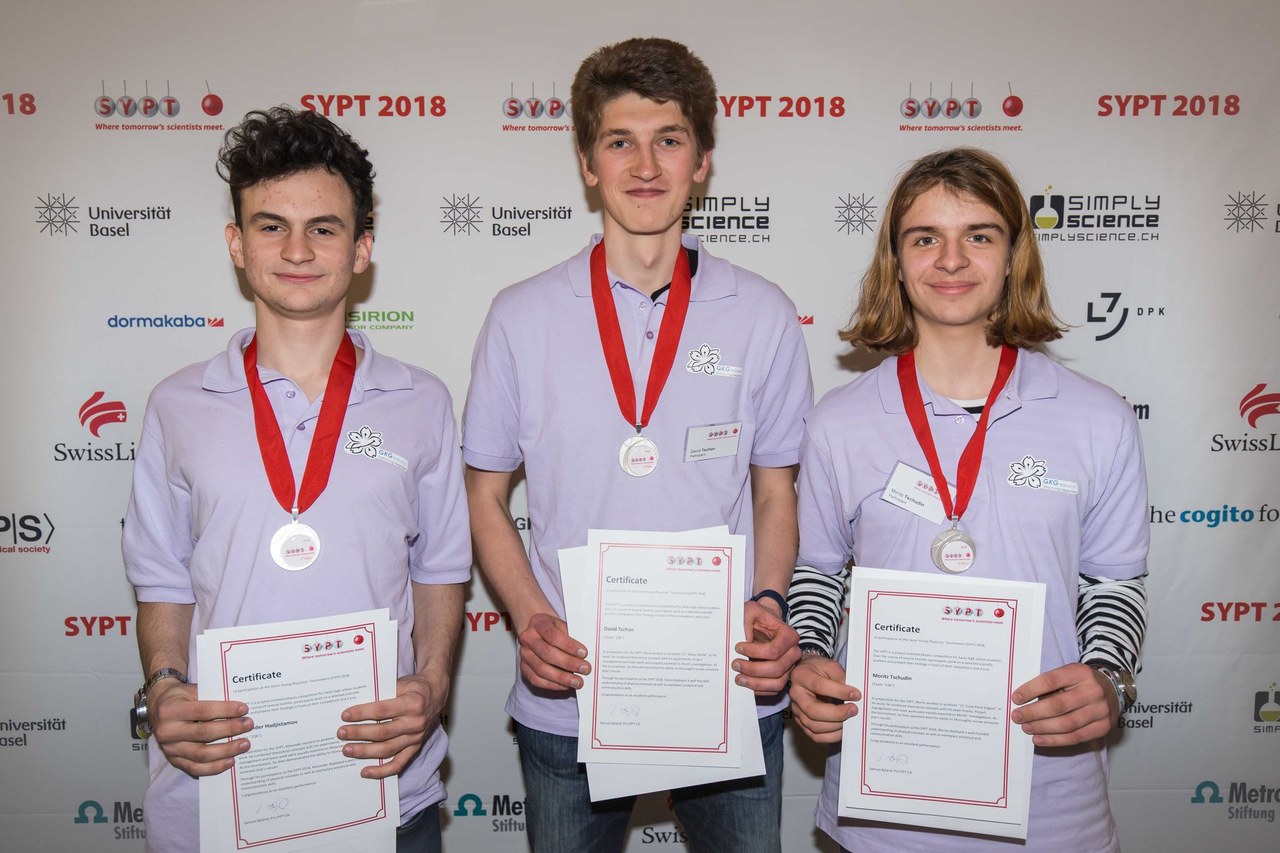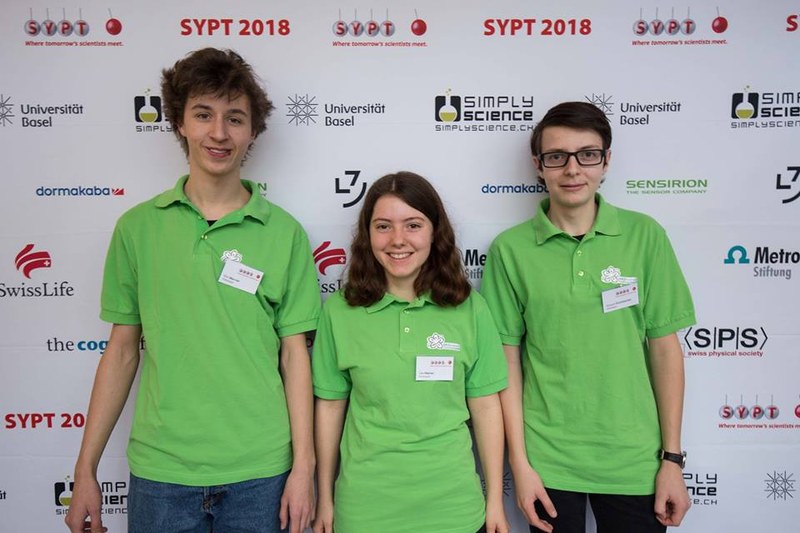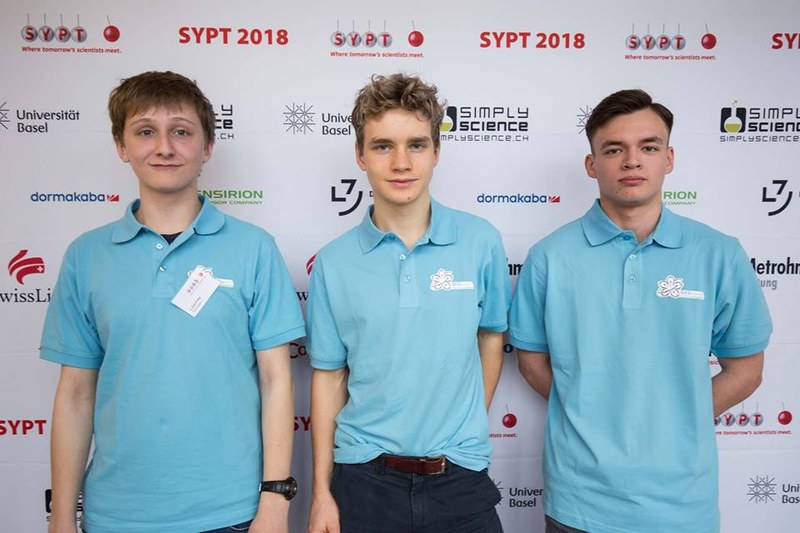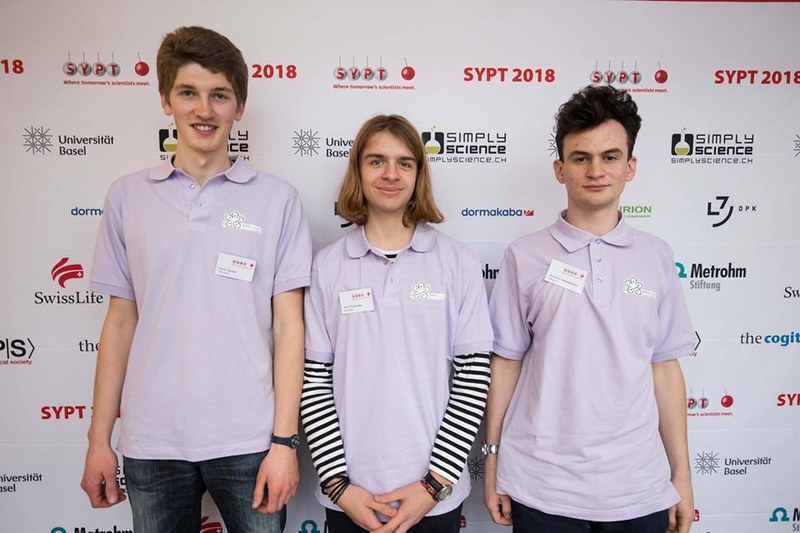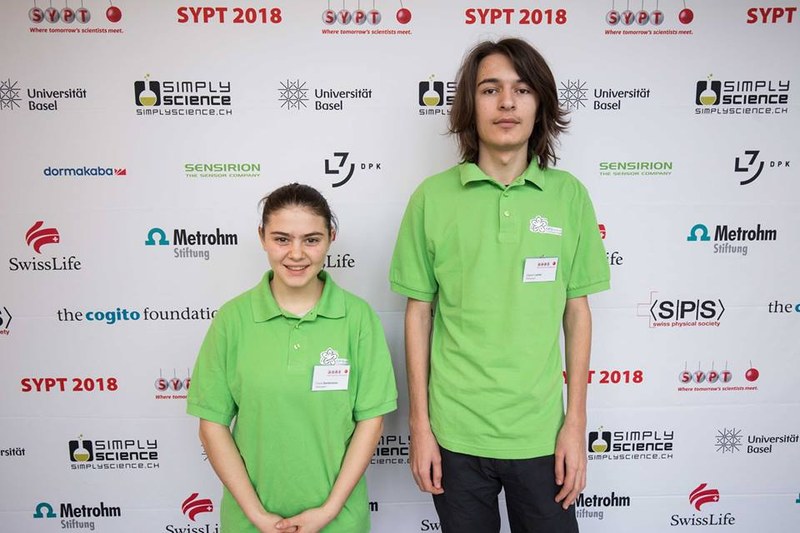GKGresearch @ SYPT 2018
2018 waren wir bereits mit vier Teams vertreten und konnten mit David Tschan sogar den Gesamtsieger stellen. Sein Team erreichte beim Final-Fight den 2. Rang.
Unter den Top 10 konnten sich weiter Moritz Tschudin und Elio Wanner platzieren. Insgesamt war das SYPT 2018 für uns sehr erfolgreich.
David Tschan überzeugte zudem in der Endauswahl zum IYPT und durfte als Teamleader die Schweiz beim IYPT in Peking begleiten. Einen genauen Erfahrungsbericht finden Sie hier.
Aktuelle Forschungsarbeiten
Zur Zeit werden 10 Themen an unserer Schule bearbeitet.
Diese werden zum Teil am SYPT oder SMP der Universität Basel präsentiert. Mansche Themen sind auch im Rahmen der Ergänzungsfachs Physik entstanden. Folgende Aufgabenstellungen werden an unserer Schule im Schuljahr 2017/18 bearbeitet:
1. Invent Yourself
Construct a simple seismograph that amplifies a local disturbance by mechanical, optical or electrical methods. Determine the typical response curve of your device and investigate the parameters of the damping constant. What is the maximum amplification that you can achieve?
Bearbeitet von Fiona Santarossa (4A), Maturaarbeit
3. Dancing Coin
Take a strongly cooled bottle and put a coin on its neck. Over time you will hear a noise and see movements of the coin. Explain this phenomenon and investigate how the relevant parameters affect the dance.
Bearbeitet von Leon Scharf & Laslo Dosa (5g, EF-Arbeit)
4 - Heron's Fountain
Construct a Heron’s fountain and explain how it works. Investigate how the relevant parameters affect the height of the water jet.
Bearbeitet von Vincent Grumbacher (3d), Marko Janic (3d) und Djahan Lamei (3d)
5. Drinking Straw
When a drinking straw is placed in a glass of carbonated drink, it can rise up, sometimes toppling over the edge of the glass. Investigate and explain the motion of the straw and determine the conditions under which the straw will topple.
Bearbeitet von Leia Köstinger & Sabrina Schmid (5g, EF-Arbeit)
7. Conical Piles
Non-adhesive granular materials can be poured such that they form a cone-like pile. Investigate the parameters that affect the formation of the cone and the angle it makes with the ground.
Bearbeitet von Ying Hillenbrand & Fiona Nafaa (5f, EF-Arbeit)
9. Candle in Water
Add some weight to a candle such that it barely floats in water. As the candle burns, it may continue to float. Investigate and explain this phenomenon.
Bearbeitet von Laurin Egli & Luca Formenti (5B, 5g, EF-Arbeit)
10. Tesla Valve
A Tesla valve is a fixed-geometry, passive, one-direction valve. A Tesla valve offers a resistance to flow that is much greater in one direction compared to the other. Create such a Tesla valve and investigate its relevant parameters.
Bearbeitet von Lea Steiner & Samuel Bossardt (3e), Alexander Hdjistamov (4e, Maturaarbeit)
12. Curie Point Engine
Make a nickel disc that can rotate freely around its axis. Place a magnet near the edge of the disc and heat this side of it. The disc starts to rotate. Investigate the parameters affecting the rotation and optimize the design for a steady motion.
Bearbeitet von Lukas Frey, Moritz Tschudin, Elio Wanner und Salome Wehrli (alle 3d)
16. Acoustic Levitation
Small objects can levitate in acoustic standing waves. Investigate the phenomenon. To what extent can you manipulate the objects?
Bearbeitet von Senhong Cao (4f, Maturaarbeit)
17. Water Bottle
The current craze of water bottle flipping involves launching a partially filled plastic bottle into the air so that it performs a somersault before landing on a horizontal surface in a stable, upright position. Investigate the phenomenon and determine the parameters that will result in a successful flip.
Bearbeitet von David Tschan (4e, Maturaarbeit)

